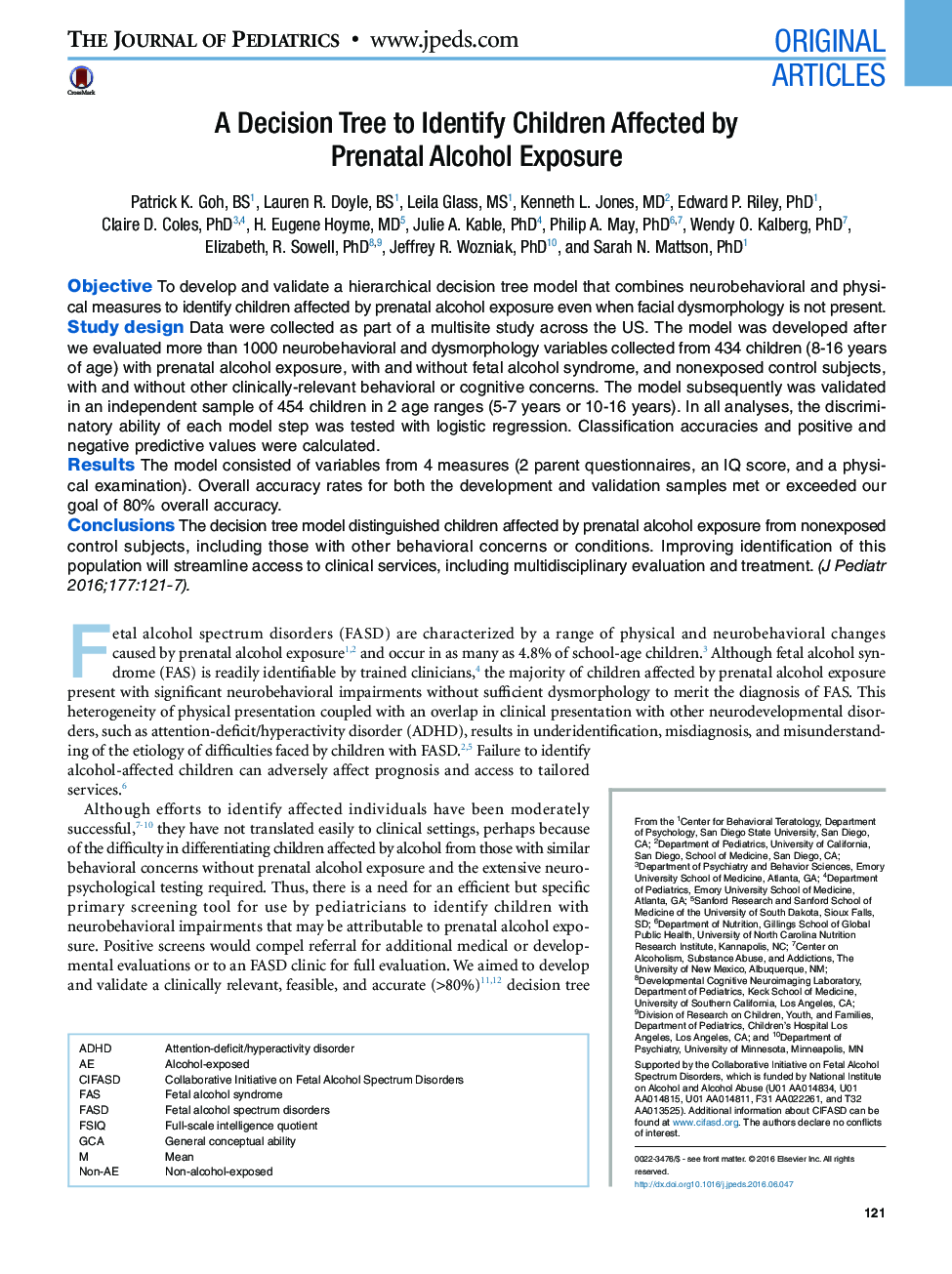| Article ID | Journal | Published Year | Pages | File Type |
|---|---|---|---|---|
| 6218687 | The Journal of Pediatrics | 2016 | 8 Pages |
ObjectiveTo develop and validate a hierarchical decision tree model that combines neurobehavioral and physical measures to identify children affected by prenatal alcohol exposure even when facial dysmorphology is not present.Study designData were collected as part of a multisite study across the US. The model was developed after we evaluated more than 1000 neurobehavioral and dysmorphology variables collected from 434 children (8-16 years of age) with prenatal alcohol exposure, with and without fetal alcohol syndrome, and nonexposed control subjects, with and without other clinically-relevant behavioral or cognitive concerns. The model subsequently was validated in an independent sample of 454 children in 2 age ranges (5-7 years or 10-16 years). In all analyses, the discriminatory ability of each model step was tested with logistic regression. Classification accuracies and positive and negative predictive values were calculated.ResultsThe model consisted of variables from 4 measures (2 parent questionnaires, an IQ score, and a physical examination). Overall accuracy rates for both the development and validation samples met or exceeded our goal of 80% overall accuracy.ConclusionsThe decision tree model distinguished children affected by prenatal alcohol exposure from nonexposed control subjects, including those with other behavioral concerns or conditions. Improving identification of this population will streamline access to clinical services, including multidisciplinary evaluation and treatment.
